Pearl are one of the most iconic and precious gems, famous for their beauty and symbolism. From the warm waters of French Polynesia to the rivers of China, pearls have fascinated people for centuries. This blog will look at the different types of pearls, their origin, and the mines they come from and why they are so popular. We will explore everything from Akoya pearls to Tahitian pearls, their colors and how they came to be known.
Types of Pearls from A to Z
| Pearl Type | Origin | Mines/Locations | Year Discovered/Popularized | Color Range |
| Akoya Pearl | Japan, China | Pinctada fucata oyster | 1900s (Cultured by Mikimoto) | White, cream, silver, pink overtones |
| Blue Pearl | New Zealand, Chile | Abalone mollusk (Paua) | Modern Era | Blue, red, green, violet, gold |
| Freshwater Pearl | China, USA, Japan | Freshwater lakes, rivers | Ancient times | White, peach, lavender, pastel hues |
| Keshi Pearl | Japan, French Polynesia | By-product of pearl farms | 20th century | White, grey, black, rose |
| Mabe Pearl | Japan, Indonesia | Half-shell growth | Early 20th century | Pink, gold, blue, swirled colors |
| South Sea Pearl | Australia, Philippines | Pinctada maxima oyster | 19th century | White, cream, gold |
| Tahitian Pearl | French Polynesia | Pinctada margaritifera | 1960s | Black, green, blue, grey, peacock |
Description of Pearls
Akoya Pearls
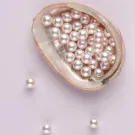
Extreme classical beauty defines Akoya pearls with small size and high luster. These pearls are grown from Pinctada fucata oyster and mostly farmed in Japan and China. They were introduced to the market by Kokichi Mikimoto, in the early 1900s, and they reinvented the production of cultured pearls. Because of the near perfect round shape and reflective sheen, the Akoya pearl is prized. Available in white or cream, with pink or silver overtones as a rule, they are a classic choice for fine jewelry.
Blue Pearl

They are rare, blue pearls which come from the Paua mollusk found in New Zealand and Chile. These are beautiful; they’re blue, green, gold — and look different depending on how the light hits them. In recent decades blue pearls have become very popular and are now considered a modern treasure because of their rarity and beautiful color.
Freshwater Pearl
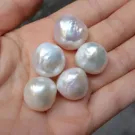
The freshwater pearls are raised in rivers and freshwater lakes and most are found from China. The freshwater pearls are cheaper, more versatile and generally smaller and less lustrous than saltwater pearls. There are various shapes and colors of freshwater pearls – from white to pastel, such as peach or lavender. Because of the affordability and diversity of them they are perfect for casual and fashion forward jewelry design.
Keshi Pearl

Keshi are pearls considered to be ‘poppy seed’ pearls, and are a byproduct of pearl fish farming. All nacre, that means they shine exquisitely. Keshi pearls are irregular in shape and size and available from white through black. Although very small they are highly prized because of their shimmering beauty and unusual shapes.
Mabe Pearl
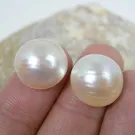
These pearls are known as mabe pearls because they tend to be a flat, dome shape since they are grown against the inner shell of the oyster. These are mainly farmed in Japan and Indonesia and are prized for the fact that they may come in pink or gold swirls. Because of their distinctive shape they are particularly handsome for rings and pendants.
South Sea Pearl
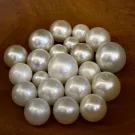
South Sea pearls are the largest and most luxurious of all pearls. They are cultivated in Australia, Indonesia and the Philippines from the Pinctada maxima oyster and range in size of 9 to 20 mm. They have a velvety sheen, and the nacre is thick, and these pearls come in shades of cream, white and gold. Because of their rarity and grandeur, they are a collector’s dream.
Tahitian Pearl
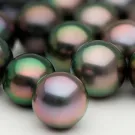
Black pearls, or Tahitian pearls, are farmed in French Poynesia. There’s something naturally dark about these pearls—in grey, green, purple and even peacock overtones. On the other hand, tahitian pearls are bigger (8 to 16 mm) and are known for striking, exotic appearance and sought after by pearl lovers.
Why Pearls Have Value
Pearls derive their value from various factors: rarity, size, color, luster, and shape. Natural pearls, especially those harvested from the wild, are extremely rare and highly sought after. Cultured pearls, though more abundant, still hold significant value depending on their quality.
The luster, or how light reflects off the pearl’s surface, is one of the most important determinants of value. Pearls with a deep, mirror-like sheen, such as Akoya and South Sea pearls, command higher prices. The thickness of the nacre, or the layers of calcium carbonate that form the pearl, also affects value. Pearls with thicker nacre tend to have greater luster and durability, making them more expensive.
Moreover, pearls from specific regions, like Tahitian or South Sea pearls, are often more valuable due to their unique environmental conditions and longer cultivation times. These pearls are grown in protected areas, often under strict government regulation, adding to their exclusivity and price
FAQs About Pearls
- What is the difference between natural and cultured pearls?
Natural pearls form spontaneously in the wild, without human intervention, while cultured pearls are farmed by inserting an irritant into an oyster to stimulate pearl production. Both are made of nacre but vary significantly in rarity and price(Chroma Gems & Co).
- How are pearls graded?
Pearls are graded based on size, shape, color, luster, surface quality, and nacre thickness. However, there is no universal grading system, with each pearl type sometimes having its own set of grading standards(Gem Rock Auctions).
- Are Tahitian pearls always black?
Tahitian pearls are often called black pearls, but they come in a variety of colors, including green, grey, blue, and even purple. The term “black” refers to their darker tones rather than a pure black hue(Gem Rock Auctions).
- What makes South Sea pearls so valuable?
South Sea pearls are large, have thick nacre, and exhibit exceptional luster. Their natural colors, particularly the golden variety, are rare, making them one of the most valuable types of pearls(Jewelry Shopping Guide)(Gem Rock Auctions).
In conclusion, pearls have fascinated people for centuries, not only for their beauty, but also for their rich history and cultural significance. Whether you are drawn to the exotic allure of a Tahitian pearl or the classic elegance of an Akoya pearl, pearls remain timeless treasures of the sea.
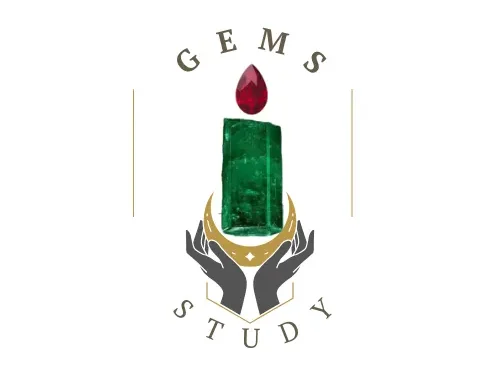

2 comments
I apologise, but, in my opinion, you are not right. I am assured. Let’s discuss it. Write to me in PM.
https://dissertation-now.com/coursework/